Identifiabilty of Radioligand Binding Parameters using Positron
advertisement
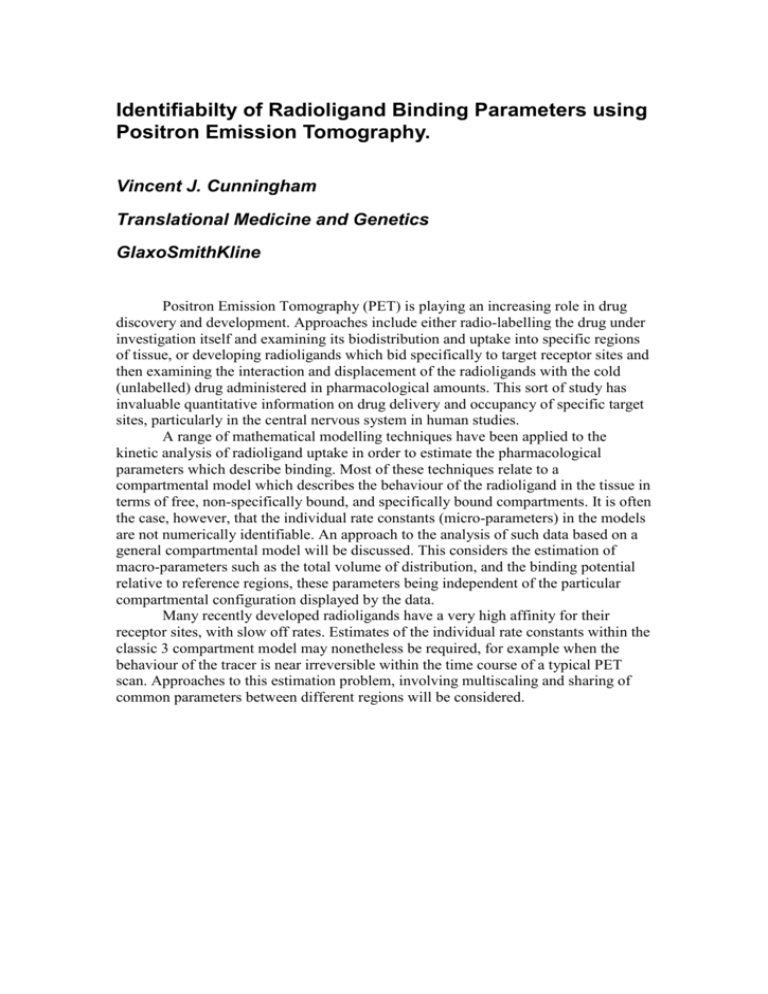
Identifiabilty of Radioligand Binding Parameters using Positron Emission Tomography. Vincent J. Cunningham Translational Medicine and Genetics GlaxoSmithKline Positron Emission Tomography (PET) is playing an increasing role in drug discovery and development. Approaches include either radio-labelling the drug under investigation itself and examining its biodistribution and uptake into specific regions of tissue, or developing radioligands which bid specifically to target receptor sites and then examining the interaction and displacement of the radioligands with the cold (unlabelled) drug administered in pharmacological amounts. This sort of study has invaluable quantitative information on drug delivery and occupancy of specific target sites, particularly in the central nervous system in human studies. A range of mathematical modelling techniques have been applied to the kinetic analysis of radioligand uptake in order to estimate the pharmacological parameters which describe binding. Most of these techniques relate to a compartmental model which describes the behaviour of the radioligand in the tissue in terms of free, non-specifically bound, and specifically bound compartments. It is often the case, however, that the individual rate constants (micro-parameters) in the models are not numerically identifiable. An approach to the analysis of such data based on a general compartmental model will be discussed. This considers the estimation of macro-parameters such as the total volume of distribution, and the binding potential relative to reference regions, these parameters being independent of the particular compartmental configuration displayed by the data. Many recently developed radioligands have a very high affinity for their receptor sites, with slow off rates. Estimates of the individual rate constants within the classic 3 compartment model may nonetheless be required, for example when the behaviour of the tracer is near irreversible within the time course of a typical PET scan. Approaches to this estimation problem, involving multiscaling and sharing of common parameters between different regions will be considered.
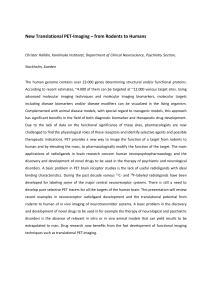
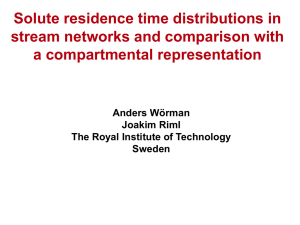
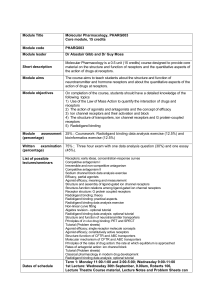


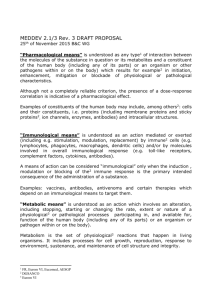
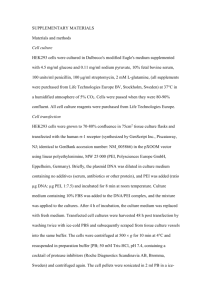


![Quantification of [ F]diprenorphine kinetics in the human brain with](http://s3.studylib.net/store/data/008858163_1-72f2d0d46bf0d160df98a688f97feda5-300x300.png)